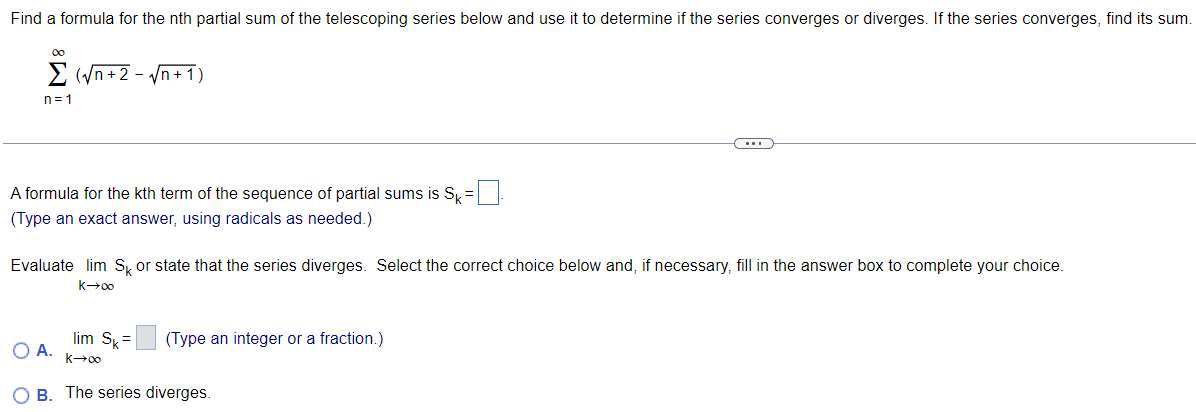Find a formula for the nth partial sum of the telescoping series below and use it to determine if the series converges or diverges. If the series converges, find its sum. ∑ n = 1 ∞ ( n + 2 − n + 1 ) A formula for the k t h term of the sequence of partial sums is Sk = . (Type an exact answer, using radicals as needed.) Evaluate lim k → ∞ Sk or state that the series diverges. Select the correct choice below and, if necessary, fill in the answer box to complete your choice. A. lim k → ∞ Sk = (Type an integer or a fraction.) B. The series diverges.



You'll get a detailed, step-by-step and expert verified solution.
 Work With Experts to Reach at Correct Answers
Work With Experts to Reach at Correct Answers